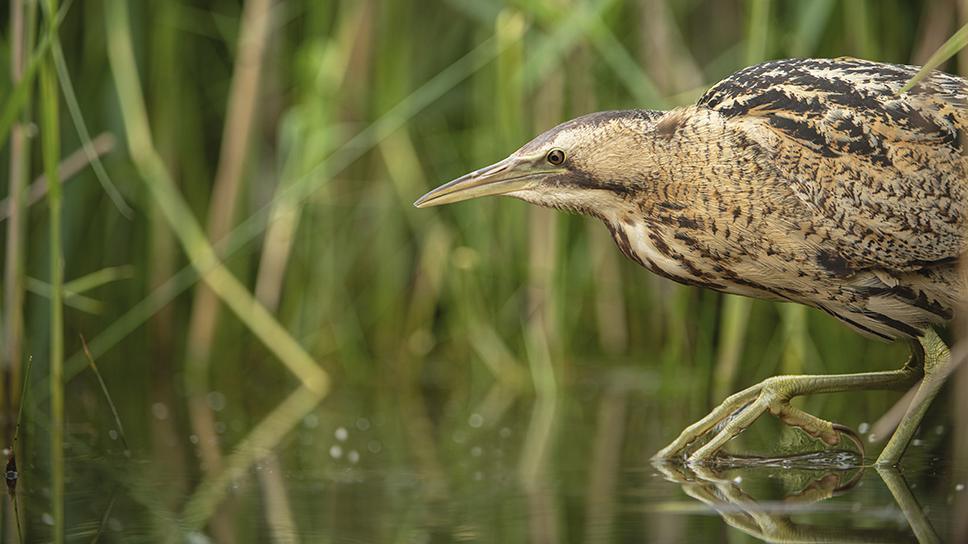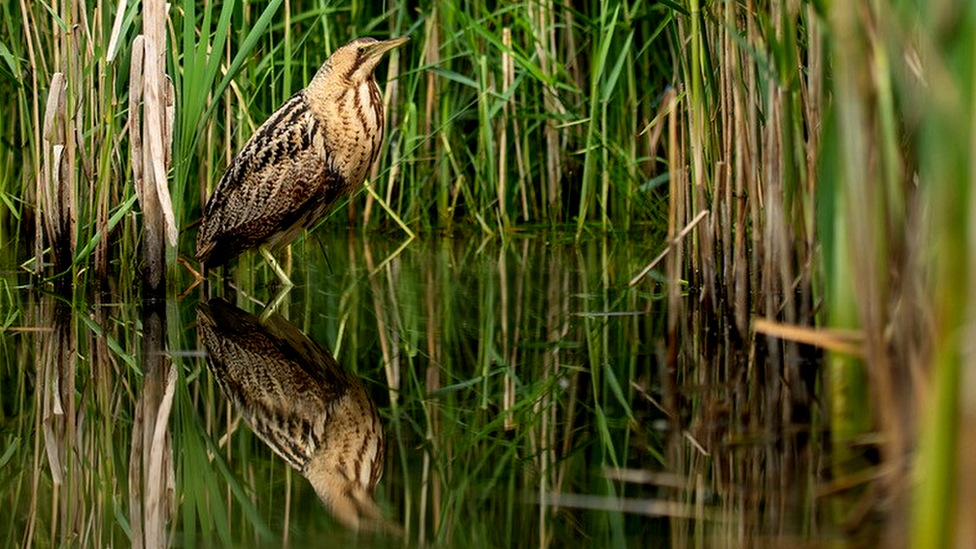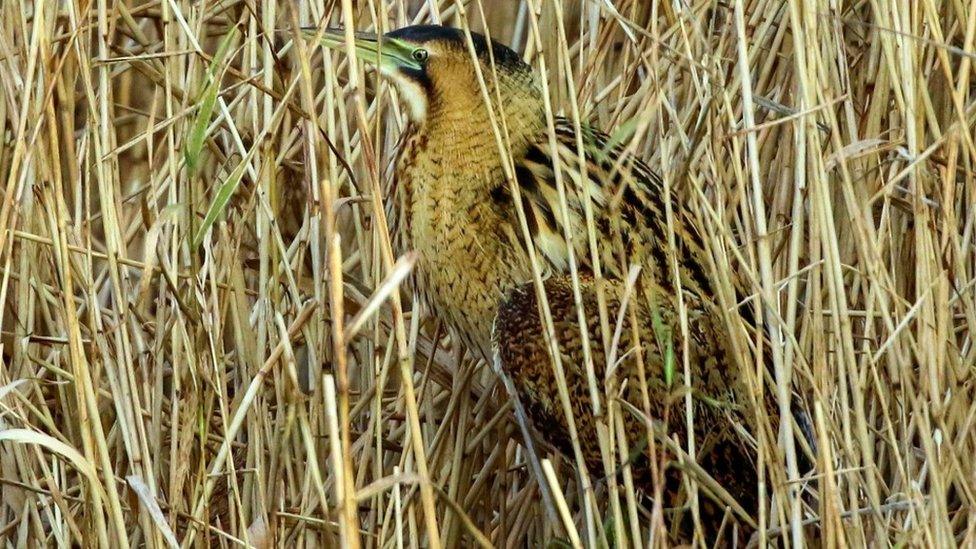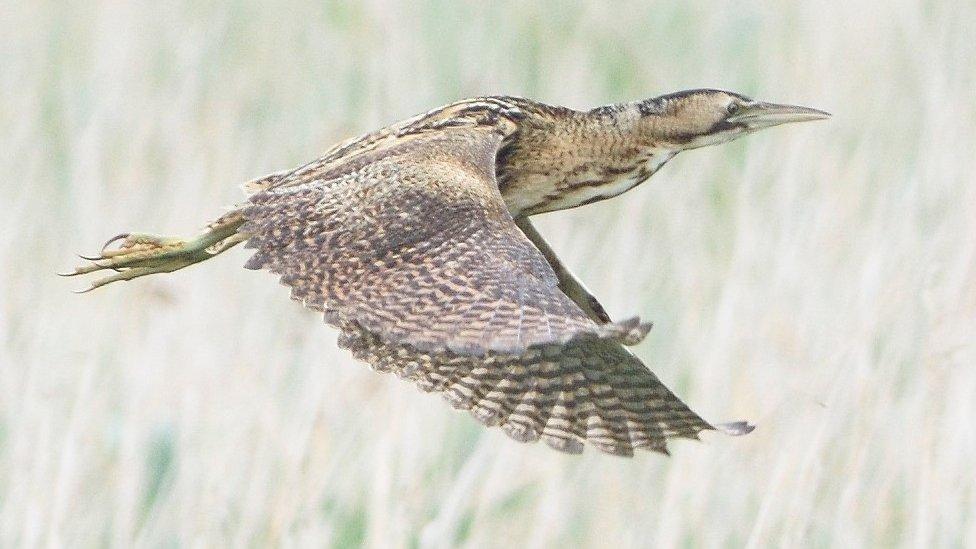RSPB confirms its most northerly breeding bitterns

The bittern had been extinct in the UK
At a glance
The RSPB has confirmed its most northerly breeding bitterns at Saltholme
Bitterns are one of the rarest breeding birds in the UK
The birds became extinct in the UK in the 1870s
- Published
The RSPB has confirmed the presence of its most northerly breeding bitterns at a nature reserve on Teesside.
RSPB Saltholme said the birds bred at the reserve in Stockton for the first time in the summer.
They set up home in reedbeds specifically designed to attract the rare bird.
Warden Ed Pritchard said it was a "fantastic result" for nature on Teesside.
“During the cold January days, when the pools froze over, the bitterns were once again seen feeding at the edge of the reedbed," he said.
"Now spring has arrived we are looking forward to hearing the booming of the male bird once again."
Maintaining the right habitat for the birds, such as cutting areas of established reed, could not be achieved without the help of volunteers, Mr Pritchard said.

Specially designed reed beds were created to attract the bitterns
Bitterns, a member of the heron family, are on the amber list of endangered species and one of the rarest breeding birds in the UK.
They became extinct in the UK in the 1870s due to persecution and the draining of wetlands but 228 males were counted in the last breeding season, the RSPB said.
Conservation work has been carried out since 1990 to identify their needs and provide for their habitat, feeding and nesting.
When the RSPB Saltholme reserve was first opened in 2009 one of its main objectives was to attract the birds.

There are now 228 male bitterns in the UK
The "secretive" birds are dependent on reedbeds which they move through seeking out fish, insects and amphibians, the RSPB said.
In spring, the males make a far-reaching booming call which carries for up to three miles (5km) and is used to establish territories and attract mates.
Reserve manager Chris Francis said visitors had " been delighted with sights of a lone male bittern feeding and flying again across the reserve".
Follow BBC North East & Cumbria on Twitter, external, Facebook, external and Instagram, external. Send your story ideas to northeastandcumbria@bbc.co.uk.
Related topics
More on Bitterns
- Published25 March 2022

- Published25 August 2021

- Published16 July 2020
